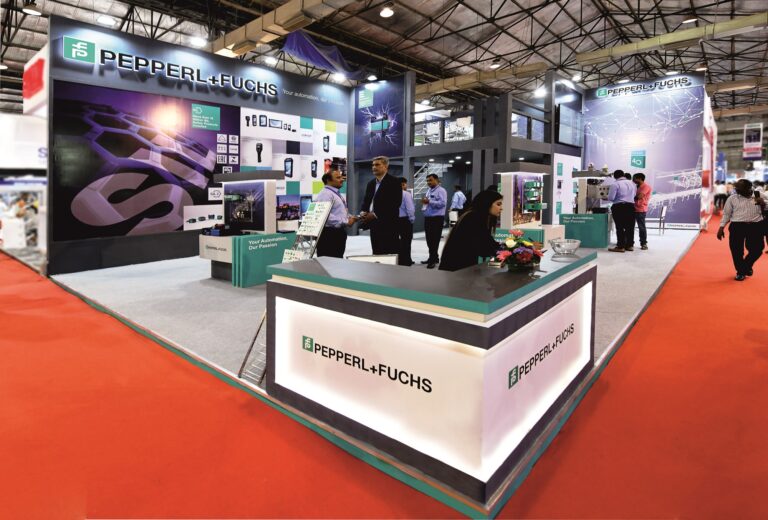
In today’s competitive exhibition landscape, leveraging technology in exhibition stand design is no longer optional but essential. Technology has transformed the way businesses approach exhibitions, enabling them to create more engaging, interactive, and impactful stands that capture visitors’ attention. From digital displays to interactive experiences, technology plays a significant role in enhancing the overall exhibition experience. Let’s explore the various ways technology contributes to exhibition stand design.
Interactive Displays and Digital Signage
One of the most prominent ways technology enhances exhibition stand design is through interactive displays and digital signage. These technologies help businesses engage visitors and deliver dynamic content that grabs attention. Large digital screens can showcase videos, presentations, and product demonstrations, making your stand more visually appealing and informative.
Interactive kiosks and touchscreens allow visitors to explore your products or services at their own pace. Incorporating interactive elements into your exhibition stand design creates a more engaging experience that encourages visitors to spend more time at your booth. These technologies also help streamline product information and facilitate direct communication with your audience, providing an experience that static displays cannot match.
Virtual and Augmented Reality
Virtual Reality (VR) and Augmented Reality (AR) transform exhibition stand design by creating immersive, interactive environments. VR enables businesses to take visitors on virtual tours, allowing them to explore products or services in 3D or experience simulations that would be impossible in the physical space of the exhibition hall. AR, on the other hand, overlays digital information in the real world, offering interactive experiences that blend physical and digital elements.
For example, an automotive company could use AR to allow visitors to explore a car’s features in a virtual environment. These technologies create memorable experiences that capture the visitor’s attention and offer an innovative way to present complex products and services.
Smart Lighting and Dynamic Visuals
Lighting is a crucial element in exhibition stand design, and with the help of technology, businesses can create dynamic and adaptable lighting schemes that enhance the atmosphere of their stands. LED lighting, for instance, offers flexibility and energy efficiency, allowing designers to incorporate lighting that can change colour, intensity, or pattern in response to specific needs or times of the day.
Smart lighting systems can also be synchronized with other visual elements like screens and projections to create a more cohesive, dynamic experience. This technology ensures that the exhibition stand captures attention and sets the right mood, drawing visitors in and maintaining their interest.
Data Analytics and Audience Engagement
Technology enables exhibition stand designers to collect valuable data about visitor interactions with the stand. Sensors, tracking systems, and digital platforms can record how visitors engage with different stand elements, providing insights into what draws their attention most. This information helps businesses refine their exhibition strategies and improve the effectiveness of future shows.
In addition, businesses can use technology to capture leads more efficiently. Digital forms, QR codes, and contactless registration systems make it easier for visitors to engage with the brand and leave their details, helping exhibitors build a more qualified contact list for post-event follow-ups.
Virtual Exhibitions and Hybrid Models
In recent years, virtual and hybrid events have gained popularity, especially with the rise of remote work and digital experiences. Technology allows businesses to participate in virtual exhibitions where digital booths replace physical stands. These virtual stands can include videos, live chats, and interactive features that enable online visitors to explore the company’s products and services.
Hybrid events combine physical and virtual exhibition elements, allowing businesses to extend their reach beyond the event space. Virtual attendees can interact with the stand through live streams, webinars, and digital content. Incorporating physical and virtual elements into your exhibition stand design broadens your reach and engages audiences in multiple ways.
3D Projection Mapping
3D projection mapping is an advanced technology that transforms any surface into a dynamic display for storytelling and branding. This technology uses projectors to cast digital images onto the physical surfaces of an exhibition stand, creating a visually stunning, immersive experience. It can be used to highlight products, demonstrate features, or enhance brand messaging in a way that captivates the audience.
Integrating 3D projection mapping into your exhibition stand design elevates the overall experience, making it more memorable and visually impressive. This technology allows you to incorporate complex animations and graphics into your stand design without additional physical elements, providing a futuristic touch to your exhibition presence.
Integration with Social Media and Live Streaming
Technology also allows exhibitors to seamlessly integrate social media platforms and live streaming into their exhibition stand design. Social media walls, where live posts from visitors or attendees are displayed, encourage real-time interaction and increase your brand’s visibility across platforms like Twitter, Instagram, and Facebook.
Live streaming lets you broadcast presentations, interviews, or product demonstrations to a wider audience, extending the impact of your exhibition presence. These technologies enable you to engage both physical and online attendees simultaneously, creating a more inclusive and expansive exhibition experience.